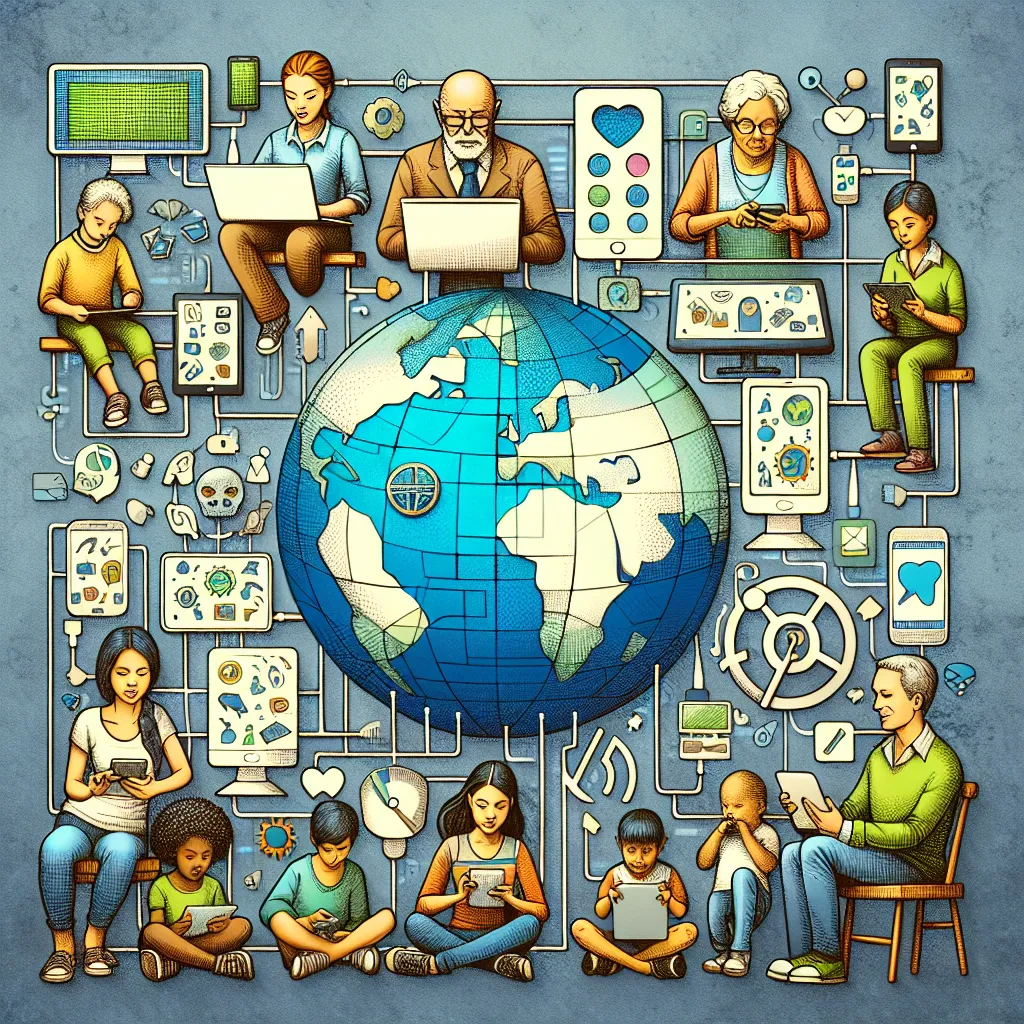In the digital age, the influence of technology on how we communicate has become a crucial topic, especially for IELTS test-takers. Understanding “The impact of technology on communication” is essential for success in various sections of the IELTS exam. Let’s delve into this subject and explore how you can effectively use this knowledge in your IELTS preparation.
Understanding the Concept
Technology has revolutionized the way we interact with one another. From instant messaging to video calls, the modes of communication have expanded dramatically. This shift has brought both advantages and challenges to our daily lives and professional environments.
Key Aspects of Technological Impact on Communication
- Speed and Efficiency: Messages can be sent and received almost instantaneously.
- Accessibility: Communication is possible across vast distances at any time.
- Multifaceted Interaction: Text, voice, and video can be combined in a single communication platform.
- Information Overload: The constant stream of messages can lead to overwhelming amounts of information.
- Changes in Language Use: New abbreviations and emoji have emerged as communication shortcuts.

Examples in Context
To better understand this concept, let’s look at some examples that you might encounter in the IELTS exam:
- “Social media platforms like Facebook and Twitter have changed how people share personal news.”
- “Video conferencing tools such as Zoom have transformed business meetings, allowing for remote collaboration.”
- “E-learning platforms have made education accessible to students worldwide, breaking geographical barriers.”
- “Telemedicine apps enable patients to consult doctors without leaving their homes.”
- “Instant translation apps are bridging language gaps in real-time communication.”
- “Virtual reality technology is creating new forms of immersive communication experiences.”
- “AI-powered chatbots are changing customer service interactions in various industries.”
- “Cloud-based collaboration tools have revolutionized project management and teamwork.”
- “Podcasts and streaming platforms have transformed how we consume audio and video content.”
- “Blockchain technology is impacting how we verify and secure digital communications.”
Application in IELTS
Understanding the impact of technology on communication can be beneficial across all sections of the IELTS test. Let’s explore how you can apply this knowledge:
IELTS Listening
In the listening section, you might encounter conversations or lectures about technological advancements in communication. For example:
- A discussion about the pros and cons of social media
- A lecture on the history of communication technology
Tip: Pay attention to specific terminology related to technology and communication. Words like “bandwidth,” “interface,” or “digital literacy” might be crucial for answering questions correctly.
IELTS Reading
Articles about technology’s impact on communication are common in the reading section. You might encounter passages discussing:
- The effect of smartphones on face-to-face interactions
- How email has changed business communication
Strategy: Practice skimming and scanning techniques with technology-related articles. Look for key terms and topic sentences to quickly grasp the main ideas.
IELTS Writing
This topic is particularly relevant for Writing Task 2, where you might be asked to write an essay on the advantages and disadvantages of technology in communication. For example:
Task: Some people believe that the widespread use of mobile phones is damaging to social interactions. To what extent do you agree or disagree?
Approach: In your response, consider both positive and negative aspects:
- Positive: Increased connectivity, especially for long-distance relationships
- Negative: Potential reduction in face-to-face communication skills
Remember to use specific examples to support your arguments. For instance:
“While mobile phones allow grandparents to video call their grandchildren living abroad, excessive use during family dinners may hinder meaningful conversations.”
IELTS Speaking
In the speaking test, you might be asked questions related to technology and communication. Prepare to discuss topics such as:
- Your preferred methods of communication
- How technology has changed communication in your country
- The future of communication technology
Example Question: How has technology changed the way you communicate with your friends and family?
Sample Answer: “Technology has significantly transformed my communication habits. For instance, I now use WhatsApp to stay in touch with my family abroad, sharing photos and videos instantly. This has brought us closer despite the physical distance. However, I’ve also noticed that I spend less time making phone calls, which sometimes makes me feel that our conversations have become more superficial.”
Common Mistakes to Avoid
When discussing the impact of technology on communication, be wary of these potential pitfalls:
-
Overgeneralization: Avoid statements like “Everyone uses social media.” Instead, use qualifiers: “Many people, especially younger generations, frequently use social media.”
-
Lack of Balance: Don’t focus solely on either positive or negative aspects. Acknowledge both sides for a well-rounded argument.
-
Outdated Information: Technology evolves rapidly. Ensure your examples are current and relevant.
-
Informal Language: While discussing modern communication methods, maintain formal language appropriate for the IELTS exam.
-
Neglecting Traditional Communication: Don’t forget to mention the continued importance of face-to-face communication alongside technological advancements.
Practice Exercises
To enhance your ability to discuss this topic effectively in IELTS, try these exercises:
-
Vocabulary Building: Create a list of technology-related terms and practice using them in sentences.
-
Essay Planning: Outline an essay on the impact of social media on interpersonal relationships.
-
Speaking Practice: Record yourself answering questions about your personal use of communication technology.
-
Reading Comprehension: Find articles on technological advancements in communication and practice summarizing the main points.
-
Listening Exercise: Watch TED Talks on communication technology and take notes on key ideas.
Conclusion
Understanding the impact of technology on communication is crucial for success in the IELTS exam. By familiarizing yourself with relevant vocabulary, examples, and arguments, you’ll be well-prepared to tackle this topic across all sections of the test. Remember to practice regularly and stay updated on the latest technological trends in communication.
We encourage you to share your thoughts on how technology has impacted your personal communication habits in the comments below. For more IELTS preparation tips and resources, explore our other articles, such as How Modern Technology is Affecting Interpersonal Communication and The Effects of Automation on Job Creation in Developing Countries.